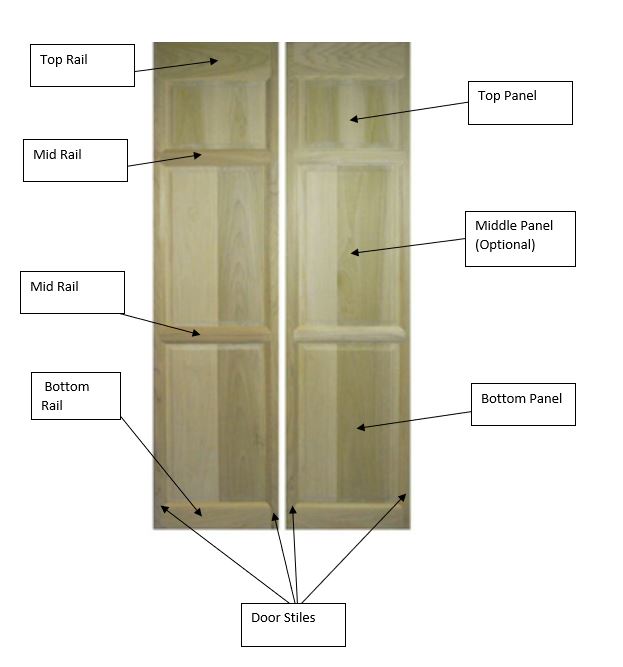Heirloom Quality Doors
Swinging Cafe Doors is proud to offer Rails and Stile Joinery.
Rail and stile joinery is a woodworking technique commonly used in the construction of framed panel doors, cabinet doors, and other similar structures. This method involves creating a strong and durable frame by joining horizontal (rails) and vertical (stiles) components together. The resulting frame provides support and structure for panels or other infill materials.
Here's a brief explanation of rail and stile joinery:
- Rails: These are the horizontal components of the frame. In the context of doors or cabinets, you typically find a top rail and a bottom rail.
-
Stiles: These are the vertical components of the frame, usually found on the sides of the door or cabinet.
-
Joinery Techniques:
-
Mortise and Tenon: This is a common method for connecting the rails and stiles. In this technique, a tenon (a projecting piece on the end of a rail) fits into a corresponding mortise (a cavity or slot) in the stile.
-
Cope and Stick: Also known as rail and stile with cope-and-stick, this method involves creating a profiled edge on the ends of the rails (usually a cope) that matches a corresponding profile on the stiles (usually a stick). These profiled edges interlock, creating a strong joint.
-
-
Panel Insertion: After constructing the frame, a panel or other material is inserted into the central area enclosed by the rails and stiles. This panel can be solid wood, plywood, glass, or another material depending on the design and functionality of the door or cabinet.
-
Purpose: The rail and stile construction method is preferred for certain applications because it helps minimize the effects of wood movement. Wood tends to expand and contract with changes in humidity and temperature. The frame created by rail and stile joinery allows for this movement without compromising the overall structure.
Rail and stile joinery is a classic and effective way to build sturdy doors and panels, and it is often used in traditional woodworking and cabinetry.

